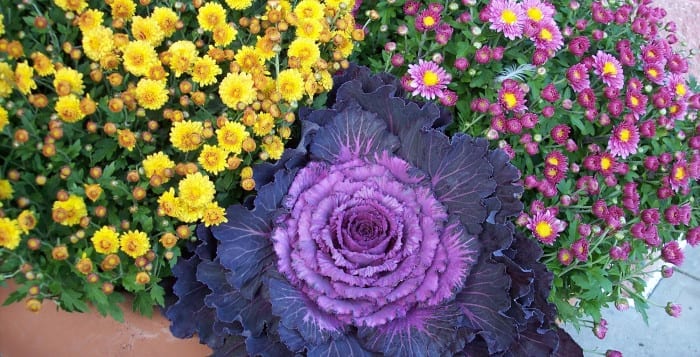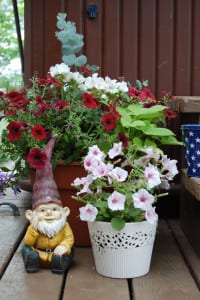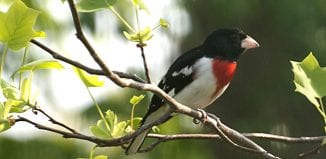Containers open up a whole new world of gardening

By Ellen Barcel
There are a lot of reasons why you might decide to grow many of your plants in containers rather than directly in the soil in your garden. Here are a few:
• If you have an area in the garden where many roots come to the surface, you can use containers to grow plants that wouldn’t survive amid the roots.
• Containers are great to control aggressive plants, for example, mints, which can take over part of the garden or cross with varieties you want to keep separate.
• If certain plants need to have a markedly different soil pH, it’s easier to control that pH in a container. Here I’m thinking of hydrangea macrophylla in particular, which needs a soil closer to neutral (7) or just slightly above that to have it turn pink.

• Container plants are great for decorating a bare spot in the garden, a deck or shed. They also can be used to decorate a tree stump, one that for one reason or another you decide not to remove.
• Plants that are viney, or hanging, do best planted in a hanging basket, where they can trail down.
• It’s easier to protect tender or iffy plants in containers. My fig trees are grown in containers, which I move into the garage to overwinter them. I know they’re varieties that supposedly are cold hardy in zone 7, but when I tried growing them in the soil, they didn’t make it through the winter. Remember to periodically water them over the winter, say once a month.
• Apartment dwellers who have just a small balcony or patio can enjoy a garden, albeit a small one, by growing their special plants in containers.
• Containers can be moved more easily, throughout the growing season or from year to year as conditions change.
• Containers can be moved out of areas that flood during nor’easters. Since virtually all plants, except those native to brackish, boggy water, can’t survive being submerged in saltwater, they need to be protected from it. How much time and energy you have dictates how many containers you’re willing or able to move when the meteorologist predicts flooding.
• A row of containers filled with vertical plants makes a nice privacy screen for a patio or deck. These could be tall grasses, small evergreens or even lowbush blueberries.
Remember, containers may need to be watered more frequently as they can dry out more quickly than plants in soil. Container plants that have large leaves frequently need special attention. The large leaves can act like little umbrellas that keep the rain from reaching the soil. Clay pots dry out more quickly than plastic or resin ones. Small pots dry out more quickly than large ones.
If you can’t find someone to water your containers while you are away on vacation, consider using watering gel (which holds excess water to be released as the soil dries out) or pots that are “self-watering,” that is, have a reserve of water for when the soil dries out. You can also set up a sprinkler on a timer.
Container size needs to match the plant or you won’t be satisfied with the results. For example, if you grow carrots in containers, you either need to have very deep containers or select a variety of carrot that is small and stubby.
Use a good quality potting soil rather than garden soil. Some potting soil already contains watering crystals and/or fertilizer. At some point, these will be used up and you’ll need to supplement the soil yourself. Read the package carefully.
Consider changing out container flowers throughout the growing season matching bloom time to maximize the seasonal impact.
Ellen Barcel is a freelance writer and master gardener. To reach Cornell Cooperative Extension and its Master Gardener program, call 631-727-7850.






